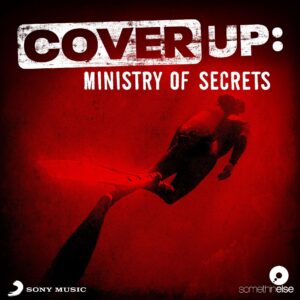Reader, I’ve been keeping a secret from you. Perhaps my insistence on writing endlessly about the Elizabeth Holmes case at the start of each round-up has been an effort to obfuscate the truth. (Speaking of Holmes, as of this writing, the husky-voiced huckster has given birth to bébé numéro deux and requested a delay on her upcoming 11-year bid.)
But now, with winter’s end approaching and “spring cleaning” initiatives about to flood our social media feeds, I feel a duty to, as my favorite songstress Hilary Duff croons, “come clean.”
Here’s my secret: I’m losing my hearing.
Relax. It’s just in one ear (my right). My left ear is fine.
Let me give you a bit of background: for the past two years, I’ve been dealing with a persistent ringing in my right ear. Actually, “ringing” isn’t quite the right word. The word “ringing” seems to imply something mellifluous (in tutor world, it’s GRE season, meaning words like “mellifluous,” “panegyrical,” and “obfuscate” are swirling around my head as of late), and the sound that provides the ever-present soundtrack to my life is anything but mellifluous.
If my life were a movie, it would sound something like this: an unceasing high-pitched dog whistle, inaudible to everyone else’s ears except mine.
Another way to describe it: as a Floridian child, I spent a lot of time in swimming pools. If you’ve ever spent time in a pool, you’re probably familiar with the following experience: submerging one’s head beneath the water, the surface sounds of pool time (feet slapping against tile, gossiping sunbathers, the shouts of an irate lifeguard) drowned out almost completely and replaced by the high-pitched whine of—what?—the pool filter?
That’s what it sounds like. Like I’m underwater all the time and there’s pool filter living in my brain.
Lest you think this presbycusis (that’s the scientific term for hearing loss) is podcast induced (I do, after all, spend upwards of three hours a day listening to the things) and are worried about your own ears, don’t.
After visiting two different ENTs, getting my brain scanned in a machine that resembled one of the hibernation pods on Netflix’s recently canceled 1899, having a miniature camera attached to a long tube threaded down my nose and into my throat, being diagnosed with acid reflux (nothing to do with the ear ringing, by the way—just an added bonus of visiting an ENT), I was finally given an answer: slowly but surely, I’m losing my hearing in my right ear. Constant tinnitus is a sign of hearing loss.
“You see this?” the ENT said, pointing to a noticeable dip on my audiogram (aka a graph that shows your hearing loss). “This cupping is a problem.” When he said “cupping,” the doctor was almost certainly referring to the shallow basin that showed my right ear almost—but not quite— entering the “Mild Hearing Loss” range. I couldn’t help but think of the mid-noughties wellness trend of the same name, the one that left painful looking “love bites” on users’ backs.
According to the audiogram, I was normal—for now. But what about the future? What if my hearing loss progressed? What if the ringing started up in my left ear? What if, horror of horrors, the ringing grew so loud that I could no longer listen to my beloved podcasts?
If there’s anything I’ve learned in the past, I don’t know, three years or so, it’s that I can’t live in the “what ifs.” Well, I can, but not without driving myself crazy.
There’s a history of hearing loss in my family, and I may one day need hearing aids, and if that day comes, I will deal with it. For now, I’m doing as the doctor instructed: taking supplements that increase blood flow to my inner ear (not quackery, my doctor assured me, though given my skepticism about anything and everything Gwyneth Paltrow might presumably be interested in, I wasn’t exactly on board with taking eight horse pills a day at first, though they do seem to be working), using a white noise machine, using over-the-ear headphones instead of in-the-ear earbuds, and generally avoiding loud noises.
What I’m not giving up? Podcasts. My doctor assured me that this extreme measure is not necessary. So, for the foreseeable future, you will find me as I usually am: bulbous over-ear headphones glued to my head, listening to one (or, who am I kidding, all) of the following podcasts.

The Coldest Case in Laramie
(NYT/Serial Productions) – Premiered Feb. 23, 2023
If there is a God, I think he/she/it sound(s) like this: Sarah Koenig unspooling a tale of true crime in her signature cool, calm, and collected tones.
I don’t think I am at all unique in being someone whose introduction to podcasts was via Serial season 1. (“There’s a shrimp sale at The Crab Crib!” “Sometimes I think Dana isn’t listening to me.” Best. Three. Seconds. In. Podcasting. History. Ever. Amiright?)
At the time of Serial’s debut (fall 2014), I was sort of skeptical of the whole enterprise. What was this new-fangled “podcasting” thing? Did it involve bringing our chunky iPods back into the fold? (In high school, I had quite the mini business going, where I decoupaged people’s devices—iPods, laptops, and the like—for a nominal fee. Maybe I could start that business up again as a sort of “side hustle,” as the parlance went back in 2014.)
At the time I found Serial, I had just graduated from college, was working a part-time job I could barely get myself to show up for without being hungover, and was serial online dating like it was my job.
And then there was Serial.
My mom, of all people, was the one who told me about it. She read about “this new podcast thing” in the newspaper. I kid you not that when she first told me about Serial, I thought she was referring to a show about breakfast cereals.
Luckily, I gave Serial a chance, and I’m so glad I did because, more likely than not, I wouldn’t be writing this round-up today if I hadn’t.
Hosted by Pulitzer Prize-winning NYT investigative reporter Kim Barker, The Coldest Case in Laramie examines the 1985 killing of 22-year-old University of Wyoming student Shelli Wiley. Barker is a Laramie insider: she spent her teen years in the town and describes it as “uncommonly mean, a place of jagged edges and cold people.” Barker left Laramie before her senior year of high school, but the unsolved Wiley case stuck with her. Barker was a high-school sophomore at the time of Shelli’s killing, and though she didn’t know Shelli personally, she found herself keeping tabs on the case and googling it every so often.
During the COVID-19 lockdowns, Barker googled Shelli’s name once again and was shocked to learn that in 2016, a former Laramie police officer had been arrested for Shelli’s murder. Despite DNA evidence linking the man to Shelli’s murder, charges against him were eventually dropped. Barker was shocked, and enlisting the help of a friend, road-tripped 1,800 miles to Laramie, her French bulldog Lucy in tow. The Cold Case in Laramie documents Barker trying to get to the bottom of a case that is anything but open and shut.

The Deck Investigates
(audiochuck) – Premiered March 9, 2023
If Sarah Koenig is the God of the true crime world, then Crime Junkie’s Ashley Flowers and Brit Prawat complete the Holy Trinity.
Helmed by Ashley Flowers, The Deck Investigates is a spin-off of The Deck, a show that takes its name from the decks of playing cards law enforcement agencies distribute to incarcerated people. These are no ordinary playing cards, however. Each contains the face of a missing or murdered person; idea is that seeing these faces might jog someone’s memory, allowing these cold cases to be cracked wide open.
While The Deck tackles one “card” (i.e. one case) per episode, The Deck Investigates takes a different approach, devoting an entire season to a single case: that of Darlene Hulse, a 28 year-old mother of three who was murdered by a stranger who broke into her home back in 1984. Darlene’s children—8-year-old Marie, 6-year-old Melissa, and 1-year-old Kristen—were in the home when the break-in occurred, but Marie and Melissa managed to escape to their grandparents’ home nearby. When law enforcement arrived at the Hulse home 15 minutes later, they found a blood-covered but unharmed baby Kristen (the blood, they would eventually learn, belonged to her mother) but no Darlene in sight. A day later, Darlene’s body was found in a wooded area, but the case remains unsolved to this day. Created in collaboration with Darlene’s three now-adult daughters, The Deck Investigates features first-hand interviews (with the Hulse daughters, law enforcement, and even potential suspects) and a deep dive into original case documents.

Sistas Who Kill: A True Crime Podcast
(MaRah & Taz) – New episodes every Friday
This one was recommended to me by the incredible Faith Adiele, and I’m obsessed with it already. In Sistas Who Kill, co-hosts and best friends MahRah and Taz research and tell the stories of Black women who kill. (Their preferred term is “murderess,” which I love!) MaRah and Taz dive deep into the crimes and their outcomes (including detailed courtroom play-by-plays), examining how Black women are treated differently by the criminal justice system from their white counterparts.
If you’re just getting started with Sistas Who Kill, might I recommend an episode that covers a case from my home state of Florida? 22-year-olds Casey Cason and Alaina Szortkya were the dictionary definition of BFFs. The pair grew up in Live Oak, a North Florida community dotted with (what else?) massive live oak trees dripping in Spanish moss, and attended high school together. By all accounts, Casey and Alaina were inseparable, and their families were close. Unfortunately, as is the case in many friendships between young women, a boy came between them. On a scorching July day in 2015, Alaina showed up at Casey’s house, high on multiple drugs and looking for a fight. Alaina began beating Casey’s head into the ground, and Casey, who’d grabbed a knife from inside to defend herself, stabbed her friend once, resulting in Alaina’s death.
An extremely unfortunate but clear-cut case of self-defense, right? Especially in a state with “Stand Your Ground” laws? Not so fast. Casey was Black and Alaina was white, and despite the fact that Alaina was clearly the aggressor in this situation, the judge ruled that Stand Your Ground did not apply to Casey’s case. What’s more, Casey wound up with an all-white, majority male jury.
I’ll let you listen to Sistas Who Kill to see how the rest of Casey’s case played out, but definitely check out this and other episodes (including the April 2021 episode on Ruby McCollum, whose case also took place in Live Oak and was covered by legendary writer Zora Neale Hurston).

Why Can’t We Talk About Amanda’s Mom?
(ID/Ark Media) – Premiered Feb. 22, 2023
If you’re a true true crime junkie, you know that anytime someone claims to find a mannequin in a deserted place, it’s almost certainly not a mannequin.
On Sunday, November 14, 1993, a man discovers what he thinks is a female mannequin on the side of a red dirt road in Theodore, AL. Theodore is tiny—an unincorporated community of about 6,500 souls on the outskirts of much larger Mobile, a bustling port city along Alabama’s Gulf Coast. Perhaps sensing what he’s found is not a mannequin, the man enlists his neighbor, a Korean War veteran, to accompany him to the scene.
The details of this case are not for the faint of heart: upon closer inspection, the woman is found to be beheaded and drained of bodily fluids. Fingerprint analysis identifies her as Maria Martinez, but here’s the thing: this woman was actually two different women living two parallel lives. As Maria Martinez, the woman worked as a high-end escort and exotic dancer, crisscrossing the country for her job. As Renée Bergeron, the name she was born with, the woman was a loving mother devoted to her daughter Amanda. Renée had Amanda when she was young—only sixteen—so Renée’s parents were raising their granddaughter. Still, the mother-daughter pair shared an especially close bond, keeping in contact through frequent visits and letters.
Why has Renée’s case remained unsolved up until now? Perhaps her profession as a sex worker has something to do with it. Sex workers and other members of marginalized groups (such as people of color, indigenous people, drug users, unhoused people, and the poor), host Sarah Cailean reminds us, are often relegated to the category of “less dead.” A term coined by criminology professor Steven Egger, “less dead” refers to the way crime victims of such groups are often devalued and overlooked because of their identities, often leading their cases to run cold.
While many pods use the investigation-unfolding-in-real-time format, Why Can’t We Talk About Amanda’s Mom is unique: Cailean was named lead investigator in Renée’s case, meaning the show provides a firsthand look as our host interviews old witnesses and suspects, compiles evidence, and drafts affidavits and search warrants.

Felonious Florida: Innocence Sold
(Sun Sentinel) – Premiered Jan. 25, 2023
TW: Child sex trafficking
I could have sworn that I already covered the South Florida Sun Sentinel’s fabulous Felonious Florida in a previous round-up, but lo and behold, after combing through three-plus years of podcast columns (has it really been that long?), I could not find a single mention of the aforementioned pod. So, here goes.
Felonious Florida isn’t a new show (it premiered back in 2018), but its third season Innocence Sold is hot off the (virtual) press, and instead of covering a different case each episode, the season dives into a set of interlinked cases.
By all accounts, Sophie Reeder was a typical South Florida teenager in the spring of 2017. The fifteen-year-old had had fair share of difficulties—Sophie’s parents divorced when she was two, and they didn’t have the best relationship—but she coped by taking long walks. On May 19, 2017 around 11:30 pm, Sophie left her father’s home in Fort Lauderdale’s Citrus Isle neighborhood. The last time Sophie was seen was at 2:16 am that same night, when CCTV captured footage of her about a mile from her father’s home.
Sophie has not been seen since.
Though Sophie had a history of sneaking out, an examination of her bedroom after her disappearance did not suggest that she intended to run away. In addition to a lit candle and $300 in cash, Sophie left behind her new pet, an adorable rat she named Alfredo.
While digging into Sophie’s case, Sun Sentinel investigative reporters Brittany Wallman and Spencer Norris discover another one with eerie similarities. Then they find two more. Over the course of six episodes, Wallman and Norris expose the dire sex trafficking problem that lurks just beneath South Florida’s shiny, sun-soaked surface.

Cover Up: Ministry of Secrets
(Somethin’ Else/Sony Music Entertainment) – Premiered March 1, 2023
The title Ministry of Secrets gives me real Harry Potter vibes (The Ministry of Magic’s Department of Mysteries, anyone?), and that’s more than enough to pique my interest.
One of the things my partner and I did during lockdown was make our way through a good chunk of the James Bond films. Unpopular opinion: despite most people’s (including my partner’s) contention that Sean Connery is hands-down the best Bond of all time, I’m more of a Timothy Dalton gal. Blame it on the fact that Monsieur Dalton starred in Penny Dreadful, the delightfully dark Victorian horror fest that is probably my favorite show of all time.
What I didn’t know before this podcast came across my (digital) desk is that Bond author Ian Fleming, who worked for the British Naval Intelligence Division during WWII, took inspiration from real-life Royal Navy diver Lionel Crabb when creating the Bond character.
A decorated war hero, frogman Crabb (a “frogman” is one who scuba dives for military and/or police operations) earned recognition for his amphibious exploits during World War II, including clearing and disarming underwater mines. In 1956, Crabb disappeared during an MI6 diving mission to inspect a Soviet ship docked in southern England’s Portsmouth Harbor.
Rumors and speculation abound even to this day, and Whitehall (for those of you who don’t binge British TV, Whitehall is the center of UK government) has remained notoriously tight-lipped on the whole affair. Did Crabb, whose diving abilities had decreased with age (and as a result of his heavy drinking and smoking), die in an accident? Or at the hands of the Soviets? Or did Crabb, bitter about being forced into an early retirement by the Royal Navy, defect, taking up a new identity as “Leonid Krabov” in the Soviet Union? Deeply researched and with a killer soundtrack (the moody but elegant background music is very Downton Abbey meets The Americans), Ministry of Secrets is a beguiling Cold War mystery you won’t soon forget.

Alphabet Boys
(iHeartPodcasts/Western Sound) – Premiered Feb. 7, 2023
My maternal grandfather was an FBI agent, and while I never met him (he died in the ‘70s, more than two decades before I was born), I’ve often wondered what his work was like. What did he do on a day-to-day basis? Did he ever meet the (in)famous J. Edgar Hoover? What kinds of top-secret missions was he involved in?
My mother and grandmother aren’t useful sources of information on the subject. (When it came to his work, my grandfather was sworn to a strict code of secrecy, and as far as I can tell, he never divulged anything to his family.)
While I can’t talk to Grandpa Charlie about his work (unless I hold a séance this weekend—I’ll let you know how that goes), I can listen to Alphabet Boys. The show’s title refers to the various “alphabet agencies” (FBI, CIA, DEA, ATF, etc) supposedly tasked with “protecting” citizens. But are these agencies catching criminals or creating them?
Each season of Alphabet Boys takes you inside an undercover investigation at one of the alphabet agencies, using secret recordings to expose these organizations’ seedy underbellies.
This season Trevor Aaronson, author of The Terror Factor: Inside the FBI’s Manufactured War on Terrorism and contributing writer for The Intercept, examines how the FBI deliberately infiltrated and undermined the racial justice movement during the summer of 2020. Using a hearse-driving, cigar-smoking violent-felon-turned-informant, the FBI encouraged violence and attempted to frame activists for crimes.
If Aaronson’s voice sounds familiar to you, it’s probably because it is: he’s the host of American ISIS and Chameleon: High Roller. He also authored The Terror Factory: Inside the FBI’s Manufactured War on Terrorism and is a contributing writer for Intercept. This is a story the FBI doesn’t want told but one Aaronson and his team are determined to get out.

Buried Bones (Exactly Right Media)
New episodes every Wednesday
Can you really call yourself a true crime aficionado if you haven’t heard of Paul Holes? I think not. For the uninitiated, Mr. Holes (I just love saying his name—don’t you?) is the silver fox O.G. who, with the help of scientist and genealogist Barbara Rae-Venter, is credited with solving the infamous Golden State Killer case. Kate Winkler Dawson has also earned the O.G. title many times over: she’s a veteran journalist who has spent the last 25 years writing about true crime; author of the books American Sherlock: Murder, Forensics, and the Birth of American CSI and Death in the Air: The True Story of a Serial Killer, the Great London Smog, and the Strangling of a City; and host of Tenfold More Wicked (seasons of which I covered in 2022 and 2023 respectively).
Like Tenfold More Wicked, Buried Bones takes on cases that are old—perfect for me given my penchant for anything that even remotely resembles a period piece.
Because Holes and Winkler Dawson are such, well, O.G.s (is there really a better title that can be bestowed upon a pair as established in the true crime world than these two?), I’ll let them tell it in their own words:
Kate: Each week, I present Paul with one of history’s most compelling true crimes.
Paul: And I weigh in using modern forensic techniques to bring new insights to old mysteries.
Kate: Together, using our individual expertise, we’re examining historical true crime cases through a 21st-century lens.
Paul: Some are solved. Some are cold. Very cold.
…And mic drop.
But in all seriousness, I love the rapport between Holes and Winkler Dawson. Yes, these are two Very Important People, each with an impressive set of credentials, but they know how to make each other laugh. If you’re just getting started with Buried Bones, I’d recommend “Sacred Heart,” which examines a 1960 case from Winkler Dawson’s home state of Texas involving a beauty queen and a Catholic priest.

















